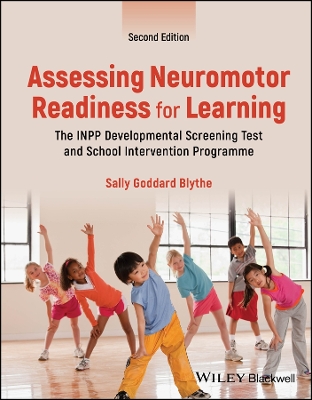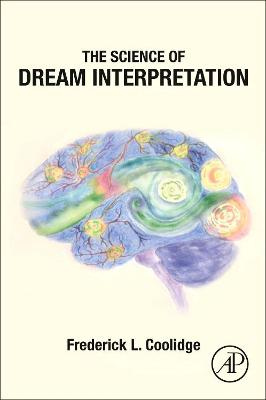Assessing Neuromotor Readiness for Learning
 portes grátis
portes grátis
Assessing Neuromotor Readiness for Learning
The INPP Developmental Screening Test and School Intervention Programme
Blythe, Sally Goddard
John Wiley & Sons Inc
12/2024
160
Dura
9781394214662
Pré-lançamento - envio 15 a 20 dias após a sua edição
Descrição não disponível.
About the Companion Website vii
1 Introduction 1
1.1 Overview 1
1.2 Rationale for Screening and Remediation of Neuromotor Immaturity 2
1.3 What is the INPP? 2
1.4 The INPP Developmental Movement Programme for Schools 3
1.5 What is Neuromotor Immaturity? 4
1.6 What is the Significance of Primitive Reflexes to Education? 5
1.7 What are Primitive Reflexes? 5
1.8 What is the Significance of Neuromotor Maturity to Education? 6
1.9 What is the Purpose of Developmental Screening Tests? 8
1.10 Why Assess Posture and Balance? 9
1.11 Why Carry Out Assessments for Balance? 9
1.12 What is the Difference Between Static Balance and Dynamic Balance? 10
1.13 What is the Significance of Postural Control in Learning? 10
1.14 Primitive Reflexes: Why Have these Three Reflexes Been Selected for Evaluation? 11
1.15 What Evidence is there Linking Balance, Posture and Reflexes to Educational Achievement? 14
1.16 What Evidence is there that Intervention in the form of Movement Programmes Aimed at the Level of Primitive Reflexes Improves Educational Outcomes? 17
1.17 How to Use the Screening Tests 18
2 Developmental Screening Tests for Use with Children Aged 4-7 Years 23
2.1 General Instructions 23
2.2 Neuromotor Tests 25
2.3 Tests for Primitive Reflexes 37
2.4 Tests for Visual Perception and Visual-Motor Integration 44
2.5 Score Sheets for 4-7 Year Old Test 50
2.6 Observation Sheets 52
2.7 Interpreting the Scores 53
3 Developmental Screening Tests for Use with Children From 7 Years of Age 56
3.1 General Instructions 56
3.2 Tests for Gross Muscle Coordination and Balance 58
3.3 Tests for Aberrant Primitive Reflexes 62
3.4 Tests for Oculomotor Functioning 72
3.5 Tests for Visual-Speech Recognition 75
3.6 Tests for Visual Perception and Visual-Motor Integration 78
3.7 Score Sheets (7 + Test) 89
3.8 Observation Sheets (7 + Test) 90
3.9 How to Interpret the Scores 91
4 The INPP Developmental Movement Programme 94
4.1 How to Use the INPP Developmental Movement Programme 94
4.2 The Developmental Movement Programme 98
4.3 Additional Optional Exercises for Integration of Left and Right 126
4.4 Postscript 131
References 131
Appendix 1: Resources 132
A1.1 Test and Exercise Video Clips 132
A1.2 Training 132
A1.3 Supplementary Resources 132
A1.4 Other Books by the Author 132
A1.5 INPP Training Courses 133
Appendix 2: Chapter 2 Test Resources 134
A2.1 Tansley Standard Figures 134
A2.2 Vertical, Horizontal and Diagonal Lines 135
A2.3 Observation Sheet for Chapter 2 Tests 136
A2.4 Scoring Sheet for Chapter 2 Tests 139
Appendix 3: Chapter 3 Test Resources 141
A3.1 Test for Fixation, Convergence and Control of Saccades 141
A3.2 Test for Visual Integration 142
A3.3 Sound Discrimination (Individual Sounds, Sound Blends and Syllables) 143
A3.4 Sound Synthesis 144
A3.5 The Tansley Standard Visual Figures Test 145
A3.6 Adapted Bender Visual-Gestalt Test 147
A3.7 Observation Sheets for Chapter 3 149
A3.8 Scoring Sheets for Chapter 3 151
1 Introduction 1
1.1 Overview 1
1.2 Rationale for Screening and Remediation of Neuromotor Immaturity 2
1.3 What is the INPP? 2
1.4 The INPP Developmental Movement Programme for Schools 3
1.5 What is Neuromotor Immaturity? 4
1.6 What is the Significance of Primitive Reflexes to Education? 5
1.7 What are Primitive Reflexes? 5
1.8 What is the Significance of Neuromotor Maturity to Education? 6
1.9 What is the Purpose of Developmental Screening Tests? 8
1.10 Why Assess Posture and Balance? 9
1.11 Why Carry Out Assessments for Balance? 9
1.12 What is the Difference Between Static Balance and Dynamic Balance? 10
1.13 What is the Significance of Postural Control in Learning? 10
1.14 Primitive Reflexes: Why Have these Three Reflexes Been Selected for Evaluation? 11
1.15 What Evidence is there Linking Balance, Posture and Reflexes to Educational Achievement? 14
1.16 What Evidence is there that Intervention in the form of Movement Programmes Aimed at the Level of Primitive Reflexes Improves Educational Outcomes? 17
1.17 How to Use the Screening Tests 18
2 Developmental Screening Tests for Use with Children Aged 4-7 Years 23
2.1 General Instructions 23
2.2 Neuromotor Tests 25
2.3 Tests for Primitive Reflexes 37
2.4 Tests for Visual Perception and Visual-Motor Integration 44
2.5 Score Sheets for 4-7 Year Old Test 50
2.6 Observation Sheets 52
2.7 Interpreting the Scores 53
3 Developmental Screening Tests for Use with Children From 7 Years of Age 56
3.1 General Instructions 56
3.2 Tests for Gross Muscle Coordination and Balance 58
3.3 Tests for Aberrant Primitive Reflexes 62
3.4 Tests for Oculomotor Functioning 72
3.5 Tests for Visual-Speech Recognition 75
3.6 Tests for Visual Perception and Visual-Motor Integration 78
3.7 Score Sheets (7 + Test) 89
3.8 Observation Sheets (7 + Test) 90
3.9 How to Interpret the Scores 91
4 The INPP Developmental Movement Programme 94
4.1 How to Use the INPP Developmental Movement Programme 94
4.2 The Developmental Movement Programme 98
4.3 Additional Optional Exercises for Integration of Left and Right 126
4.4 Postscript 131
References 131
Appendix 1: Resources 132
A1.1 Test and Exercise Video Clips 132
A1.2 Training 132
A1.3 Supplementary Resources 132
A1.4 Other Books by the Author 132
A1.5 INPP Training Courses 133
Appendix 2: Chapter 2 Test Resources 134
A2.1 Tansley Standard Figures 134
A2.2 Vertical, Horizontal and Diagonal Lines 135
A2.3 Observation Sheet for Chapter 2 Tests 136
A2.4 Scoring Sheet for Chapter 2 Tests 139
Appendix 3: Chapter 3 Test Resources 141
A3.1 Test for Fixation, Convergence and Control of Saccades 141
A3.2 Test for Visual Integration 142
A3.3 Sound Discrimination (Individual Sounds, Sound Blends and Syllables) 143
A3.4 Sound Synthesis 144
A3.5 The Tansley Standard Visual Figures Test 145
A3.6 Adapted Bender Visual-Gestalt Test 147
A3.7 Observation Sheets for Chapter 3 149
A3.8 Scoring Sheets for Chapter 3 151
Este título pertence ao(s) assunto(s) indicados(s). Para ver outros títulos clique no assunto desejado.
inpp; developmental movement program; child neuromotor skills; immature neuromotor skills; neuromotor skill development; Romberg test; tandem walk; aberrant reflex response; recognition of sounds; thumb opposition test
About the Companion Website vii
1 Introduction 1
1.1 Overview 1
1.2 Rationale for Screening and Remediation of Neuromotor Immaturity 2
1.3 What is the INPP? 2
1.4 The INPP Developmental Movement Programme for Schools 3
1.5 What is Neuromotor Immaturity? 4
1.6 What is the Significance of Primitive Reflexes to Education? 5
1.7 What are Primitive Reflexes? 5
1.8 What is the Significance of Neuromotor Maturity to Education? 6
1.9 What is the Purpose of Developmental Screening Tests? 8
1.10 Why Assess Posture and Balance? 9
1.11 Why Carry Out Assessments for Balance? 9
1.12 What is the Difference Between Static Balance and Dynamic Balance? 10
1.13 What is the Significance of Postural Control in Learning? 10
1.14 Primitive Reflexes: Why Have these Three Reflexes Been Selected for Evaluation? 11
1.15 What Evidence is there Linking Balance, Posture and Reflexes to Educational Achievement? 14
1.16 What Evidence is there that Intervention in the form of Movement Programmes Aimed at the Level of Primitive Reflexes Improves Educational Outcomes? 17
1.17 How to Use the Screening Tests 18
2 Developmental Screening Tests for Use with Children Aged 4-7 Years 23
2.1 General Instructions 23
2.2 Neuromotor Tests 25
2.3 Tests for Primitive Reflexes 37
2.4 Tests for Visual Perception and Visual-Motor Integration 44
2.5 Score Sheets for 4-7 Year Old Test 50
2.6 Observation Sheets 52
2.7 Interpreting the Scores 53
3 Developmental Screening Tests for Use with Children From 7 Years of Age 56
3.1 General Instructions 56
3.2 Tests for Gross Muscle Coordination and Balance 58
3.3 Tests for Aberrant Primitive Reflexes 62
3.4 Tests for Oculomotor Functioning 72
3.5 Tests for Visual-Speech Recognition 75
3.6 Tests for Visual Perception and Visual-Motor Integration 78
3.7 Score Sheets (7 + Test) 89
3.8 Observation Sheets (7 + Test) 90
3.9 How to Interpret the Scores 91
4 The INPP Developmental Movement Programme 94
4.1 How to Use the INPP Developmental Movement Programme 94
4.2 The Developmental Movement Programme 98
4.3 Additional Optional Exercises for Integration of Left and Right 126
4.4 Postscript 131
References 131
Appendix 1: Resources 132
A1.1 Test and Exercise Video Clips 132
A1.2 Training 132
A1.3 Supplementary Resources 132
A1.4 Other Books by the Author 132
A1.5 INPP Training Courses 133
Appendix 2: Chapter 2 Test Resources 134
A2.1 Tansley Standard Figures 134
A2.2 Vertical, Horizontal and Diagonal Lines 135
A2.3 Observation Sheet for Chapter 2 Tests 136
A2.4 Scoring Sheet for Chapter 2 Tests 139
Appendix 3: Chapter 3 Test Resources 141
A3.1 Test for Fixation, Convergence and Control of Saccades 141
A3.2 Test for Visual Integration 142
A3.3 Sound Discrimination (Individual Sounds, Sound Blends and Syllables) 143
A3.4 Sound Synthesis 144
A3.5 The Tansley Standard Visual Figures Test 145
A3.6 Adapted Bender Visual-Gestalt Test 147
A3.7 Observation Sheets for Chapter 3 149
A3.8 Scoring Sheets for Chapter 3 151
1 Introduction 1
1.1 Overview 1
1.2 Rationale for Screening and Remediation of Neuromotor Immaturity 2
1.3 What is the INPP? 2
1.4 The INPP Developmental Movement Programme for Schools 3
1.5 What is Neuromotor Immaturity? 4
1.6 What is the Significance of Primitive Reflexes to Education? 5
1.7 What are Primitive Reflexes? 5
1.8 What is the Significance of Neuromotor Maturity to Education? 6
1.9 What is the Purpose of Developmental Screening Tests? 8
1.10 Why Assess Posture and Balance? 9
1.11 Why Carry Out Assessments for Balance? 9
1.12 What is the Difference Between Static Balance and Dynamic Balance? 10
1.13 What is the Significance of Postural Control in Learning? 10
1.14 Primitive Reflexes: Why Have these Three Reflexes Been Selected for Evaluation? 11
1.15 What Evidence is there Linking Balance, Posture and Reflexes to Educational Achievement? 14
1.16 What Evidence is there that Intervention in the form of Movement Programmes Aimed at the Level of Primitive Reflexes Improves Educational Outcomes? 17
1.17 How to Use the Screening Tests 18
2 Developmental Screening Tests for Use with Children Aged 4-7 Years 23
2.1 General Instructions 23
2.2 Neuromotor Tests 25
2.3 Tests for Primitive Reflexes 37
2.4 Tests for Visual Perception and Visual-Motor Integration 44
2.5 Score Sheets for 4-7 Year Old Test 50
2.6 Observation Sheets 52
2.7 Interpreting the Scores 53
3 Developmental Screening Tests for Use with Children From 7 Years of Age 56
3.1 General Instructions 56
3.2 Tests for Gross Muscle Coordination and Balance 58
3.3 Tests for Aberrant Primitive Reflexes 62
3.4 Tests for Oculomotor Functioning 72
3.5 Tests for Visual-Speech Recognition 75
3.6 Tests for Visual Perception and Visual-Motor Integration 78
3.7 Score Sheets (7 + Test) 89
3.8 Observation Sheets (7 + Test) 90
3.9 How to Interpret the Scores 91
4 The INPP Developmental Movement Programme 94
4.1 How to Use the INPP Developmental Movement Programme 94
4.2 The Developmental Movement Programme 98
4.3 Additional Optional Exercises for Integration of Left and Right 126
4.4 Postscript 131
References 131
Appendix 1: Resources 132
A1.1 Test and Exercise Video Clips 132
A1.2 Training 132
A1.3 Supplementary Resources 132
A1.4 Other Books by the Author 132
A1.5 INPP Training Courses 133
Appendix 2: Chapter 2 Test Resources 134
A2.1 Tansley Standard Figures 134
A2.2 Vertical, Horizontal and Diagonal Lines 135
A2.3 Observation Sheet for Chapter 2 Tests 136
A2.4 Scoring Sheet for Chapter 2 Tests 139
Appendix 3: Chapter 3 Test Resources 141
A3.1 Test for Fixation, Convergence and Control of Saccades 141
A3.2 Test for Visual Integration 142
A3.3 Sound Discrimination (Individual Sounds, Sound Blends and Syllables) 143
A3.4 Sound Synthesis 144
A3.5 The Tansley Standard Visual Figures Test 145
A3.6 Adapted Bender Visual-Gestalt Test 147
A3.7 Observation Sheets for Chapter 3 149
A3.8 Scoring Sheets for Chapter 3 151
Este título pertence ao(s) assunto(s) indicados(s). Para ver outros títulos clique no assunto desejado.







